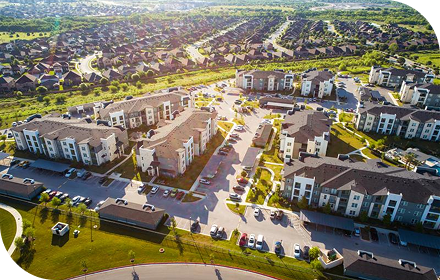About Us
For almost 90 years, Fannie Mae has provided a reliable source of affordable mortgage credit that supports homebuyers and renters across the country.
We enable 30-year fixed-rate mortgages that give homeowners stable monthly payments and the option to prepay at any time. This “American Mortgage” has become the standard, helping millions achieve the American dream of homeownership.
Foundational to America's housing market
We play an essential role in the U.S. economy, especially during tough economic times, by helping to ensure that our lending partners have enough funding to offer affordable mortgages. The housing market generally makes up 15-18% of the United States’ GDP, so a strong housing market means a stronger American economy.
Our impact at a glance
As of 3Q 2025
$287 billion
in funding to support the
U.S. housing market
1,069,000
households helped in
buying, refinancing, or
renting a home
$4.3 trillion
in total assets
How we make a difference

Supporting a strong housing market
Congress created Fannie Mae to make sure there are funds available for residential mortgage lending nationwide. We do this by purchasing mortgages from lenders and bundling them into mortgage-backed securities that we sell to investors. Lenders use their replenished cash to offer new mortgages. This continuous flow of funds, plus the standards we set and tools we provide, promote a healthy housing market that is globally unique and help make affordable options regularly available even in challenging economic times.
Making housing more accessible
We increase access to long-term homeownership and quality, affordable rental housing by using leading technology and performance data to simplify and improve the mortgage process. We are constantly innovating to provide lenders the tools to reach more creditworthy borrowers, including borrowers with gig income or who consistently make their rent payments. We help make underwriting and appraisals fairer and more objective. For homeowners facing difficulties, we offer options to avoid foreclosure, and our trusted education resources empower homeowners and renters in advancing their housing decisions.

More to explore
Page last revised: 10/29/25

